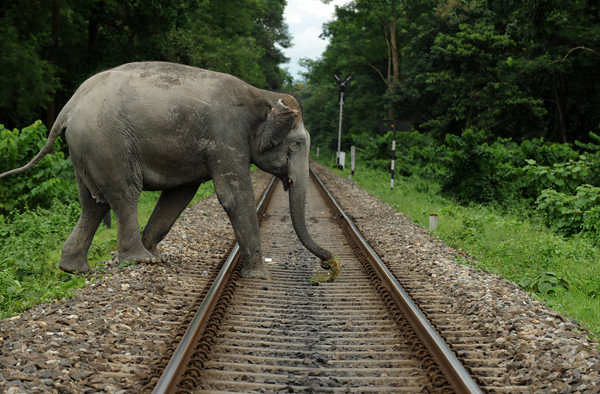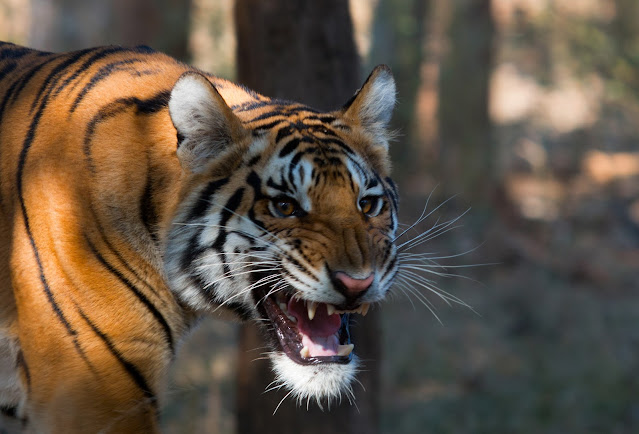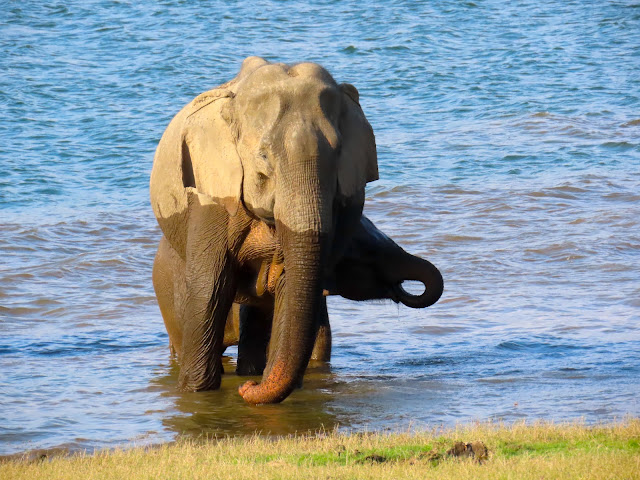As we embark on a new journey in a new year, let us look back and see some of the positive conservation stories from India in 2023. While most stories from the conservation world are dark and gloomy, there are also reasons to cheer. Here are some stories that give us reason enough to keep going and follow our passion to protect wildlife.
Two Vulture-toxic Drugs Banned In India
The Union Health Ministry banned the veterinary use of aceclofenac and ketoprofen, drugs proven toxic to vultures - a very positive step toward vulture conservation in India. In the 1990s, conservationists noticed a massive decline in India's vulture population. The widespread veterinary use of the painkiller diclofenac was found to be the culprit. Vultures feeding on cattle carcasses treated with this drug were dying as the drug was highly toxic to these birds. Following the discovery by researchers, the government banned the veterinary use of diclofenac, but other vulture-toxic drugs continued to be in use. So, the recent ban on aceclofenac and ketoprofen brings good news to vulture conservationists who are now eagerly waiting for a ban on another drug, nimesulide. Hopefully, 2024 will get more good news in this regard. Tolfenamic acid and meloxicam are safe alternatives to be used in place of these vulture-toxic painkillers.
'Gajraj System' To Be Installed To Prevent Elephant Deaths On Railway Tracks
 |
| An elephant crosses a railway track which runs through the Mahananda Wildlife sanctuary on the outskirts of Siliguri in west Bengal. Image credit: Rikki's Refuge via Flickr.com. |
The Indian Railways announced their plan to install the 'Gajraj System,' an Artificial Intelligence (AI) based surveillance system across 700 km of railway tracks in areas with frequent elephant movements. The AI-based system will detect the movement of elephants on tracks and give out alarms to the authorities to help locomotive drivers slow down to avoid running over elephants crossing railway tracks. The system has already been used for experimentation across 11 km of railway track and has been found to be very useful in preventing elephant deaths due to rail accidents. It will be installed in railway tracks running through vital elephant corridors in states like Odisha, West Bengal, Jharkhand, etc.
Release Of Documentary' Project Tiger'
 |
| An Indian tiger. Image credit: Derrick Brutel via Flickr.com |
The much-awaited feature-length documentary 'Project Tiger' by ace filmmakers Kalyan Varma and Rohit Varma of Nature inFocus was released in November. The documentary covers the tale of the world's most successful conservation story, "Project Tiger." The story is narrated by a panel of conservation stalwarts like Dr. Ullas Karanth, Dr. Mahesh Rangarajan, Bittu Sahgal, Belinda Wright, and others. It showcases some riveting images and videos from colonial times to the present of tigers and the conservation issues associated with this charismatic animal.
Lesser Florican Breeding Initiative Has Positive Outcome
 |
| Lesser florican dancing to attract mate. Image credit: Koshy Koshy via Flickr.com |
As we know, grassland birds of India, like the great Indian bustard and the lesser florican, are threatened with extinction, primarily due to the disappearance of their habitat. Captive breeding programs to breed birds for eventual release in the wild have thus been initiated at various locations to save these birds. This year, six eggs of the critically endangered lesser florican were collected from the wild and successfully hatched in a breeding center in Ajmer, Rajasthan, managed by the Rajasthan Forest Department in collaboration with the Wildlife Institute of India. It marks a significant progress in the project.
Six Indian Photographers Bag International Photography Award
 |
| The Natural History Museum, London. Image credit: Salamanamanjaro via Wikimedia Commons. |
On October 10, six Indian photographers were among the 19 awardees of the prestigious Wildlife Photographer of the Year competition held by the Natural History Museum of London. The winners were selected from nearly 50,000 entries received from across 95 countries! The youngest winner was 10-year-old Vihaan Talya Vikas, who won the award in the '10 Years and Under' category for capturing a spider-prey interaction in Karnataka.
'Environmental DNA/eDNA' To Be Used In Studying Biodiversity
New research by UK scientists has shown that DNA collected in particulate matter in air filters in air quality monitoring stations can be used to estimate the biodiversity of an area. Now, scientists at the Zoological Survey of India are planning a pilot study to use this technique in India. If successful, the process will yield very significant data related to an area's biodiversity and even give vital information about elusive species that are otherwise hard to spot.
New Research Showed That India's Tiger Reserves Help Fight Climate Change
 |
| Parambikulam Tiger Reserve, Kerala. Image credit: Prashanth dotcompals via Flickr.com |
A research study by a Singapore-based university showed that tiger reserves in India are instrumental in fighting climate change. According to the research, properly managing the country's tiger reserves helps reduce forest loss, accounts for $93 million in ecosystem services, and prevents emissions equivalent to 1 million metric tons of carbon dioxide!
New Tiger Reserve Comes Up In Madhya Pradesh
 |
| A tiger in Madhya Pradesh. Image credit: Chinmay via Flickr.com |
Madhya Pradesh got its 7th tiger reserve, the 'Veerangana Durgavati Tiger Reserve,' in 2023, making it the 54th tiger reserve in the country. The massive reserve that encompasses the Veerangana Durgavati and Nauradehi sanctuaries has 1,414 sq. km of core and 925.12 sq. km of buffer area. The area has a population of around 15 tigers. The declaration of the reserve is expected to boost tourism in the area as well as provide increased protection to wildlife.
I am sure there will be many more "happy stories" from the conservation world of India in 2023. If you know of any, comment below (comments will be visible after approval at the editor's end), and I will add the same to the above list.
Writer: Dr. Oishimaya Sen Nag

_2_Photograph_by_Shantanu_Kuveskar.jpeg)

No comments:
Post a Comment